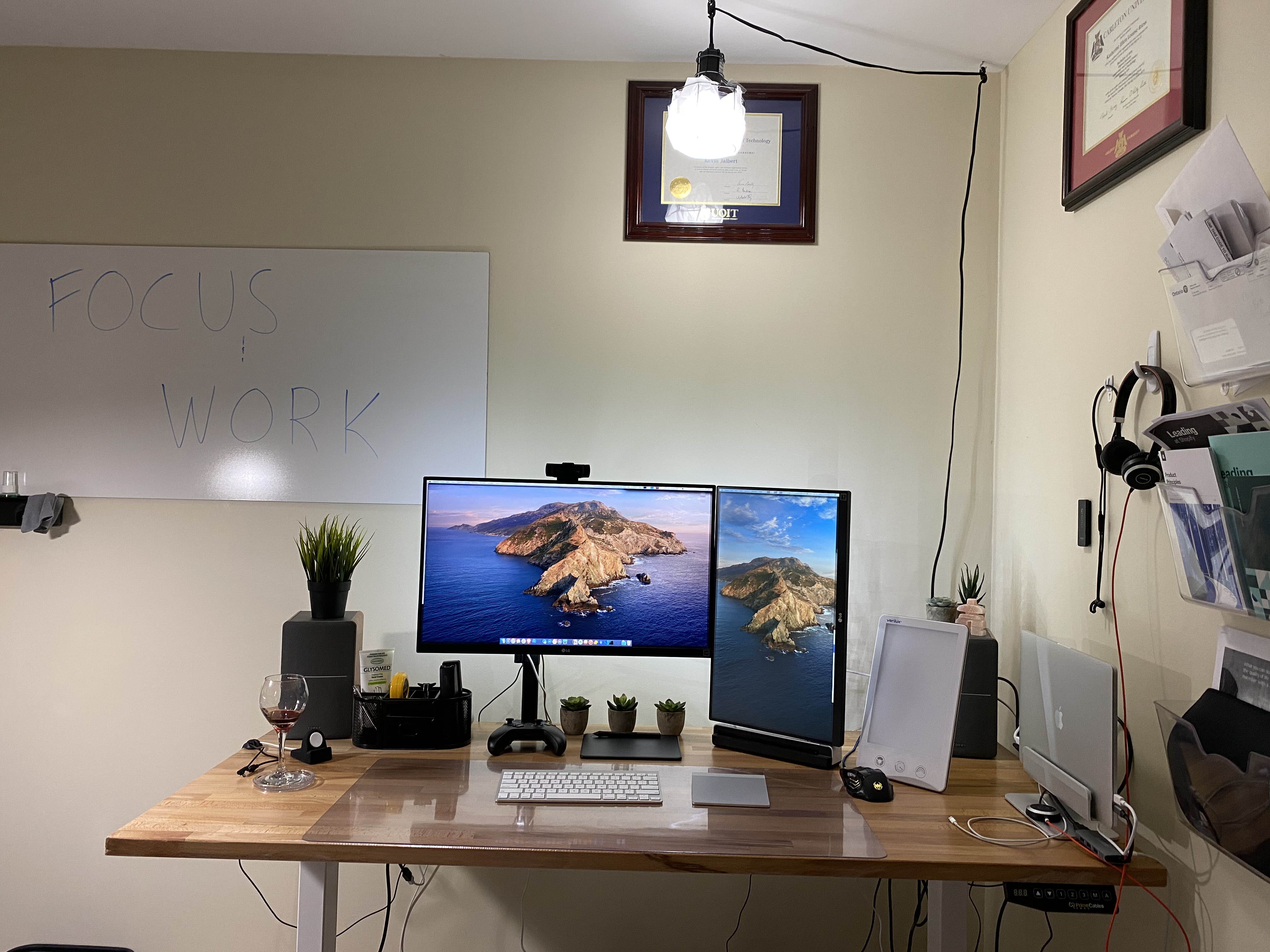I am writing a multi-part article on the topic of improving your home office.
- Part 1 was mostly a public service announcement to be aware of your home office and to evaluate it.
- Part 2 (this one) explores the physical aspects (e.g., room/space, desk, and chair).
- Part 3 explores the input/output aspects (e.g., monitor, keyboard, mouse/trackpad, audio, and video).
- Part 4 explores the miscellaneous aspects (e.g., lighting, organization, climate, and personalizations).
The physical space is the foundation on which the rest is built. Without a good location for your home office, it can be hard to get deep work done. The following dissects aspects of the physical space of a home office.
The Space
A home office is a place to focus and work, thus it is paramount to keep external distractions at bay. The space that you use for your home office will contribute greatly to how productive you might be. Having your office in a common area (e.g., living room) is pretty much fighting a losing battle if you live with other people (family/friends).
If space allows it, I highly recommend placing your home office in its own dedicated room. If that isn’t possible, the next best place would be a shared space with minimal traffic. A dedicated office space creates boundaries. When your space’s functionality and location bleed into other areas, it can blur the line between work and home time.
When deciding where your home office should be, there are various environmental factors to take into account:
- Being in a basement might limit natural light and the ability to get fresh air, and also prove noisy from the activity above.
- Being near a window (which you want to open occasionally) or other noisy space can be distracting.
- Being near a window can also introduce annoying glare.
- Being aware of air/heat circulation.
Be aware of the size of your space. Opt for a location where you can have a decent space for working, along with some space to store/place miscellaneous items. Having the extra room gives you some freedom in how to structure your space, and can open some customization opportunities (e.g., fitness equipment, whiteboard, etc.)
The Desk
Your desk is something that you don’t want to skimp on if possible. If you are planning to use the home office long term, I would avoid the following: “I just use my countertop or kitchen table. I just sit on the couch and use my lap”. If you spend long periods of time working in your home office then ergonomics and a dedicated surface are key. Once you decide on your space, I would try to maximize the surface size of your desk.
There are plenty of desk options out there, and it really boils down to what works for you and your space:
- A desk with built-in drawers and/or a hutch for extra storage space.
- A desk that supports clamps for monitor arms (i.e., good thickness/strength and an open back).
- A desk that has an ergonomic bezel.
- A desk that can support a lot of weight if necessary.
- A desk that is esthetically pleasing.
- A standing desk (fixed or adjustable) to avoid sitting all the time.
- An L-shaped desk for corner offices.
If you have a standard desk and are looking to explore the sit/stand or stand options, you could take a look at Standing Desk Converters.
The following resources are recommended readings:
The Chair
If you are working at a desk then you will likely spend many hours sitting on a chair (unless you have a standing desk). A basic wooden chair works in a pinch, but for the long term, you’ll want a chair that offers more adjustability and comfort.
Much like the desk, there are plenty of options available, most of it comes down to personal preference. For that reason, I highly recommend going with a chair that you can sit in before purchasing. The following are some factors to consider:
- A chair with casters to move around easily.
- A chair that has adjustable or removable features.
- A chair that is breathable.
- A chair that is comfortable.
- A kneeling chair
- An active wobble chair or yoga ball
One other thing to consider is a standing desk mat if you decide on the standing desk route.
The following resource is a recommended reading:
Lay the Foundation
Take care to pick the right physical space for your home office as it is the foundation upon which everything else is built. The right desk and chair will have to fit within that space comfortably. You can tailor your space to maximize productivity and comfort.
